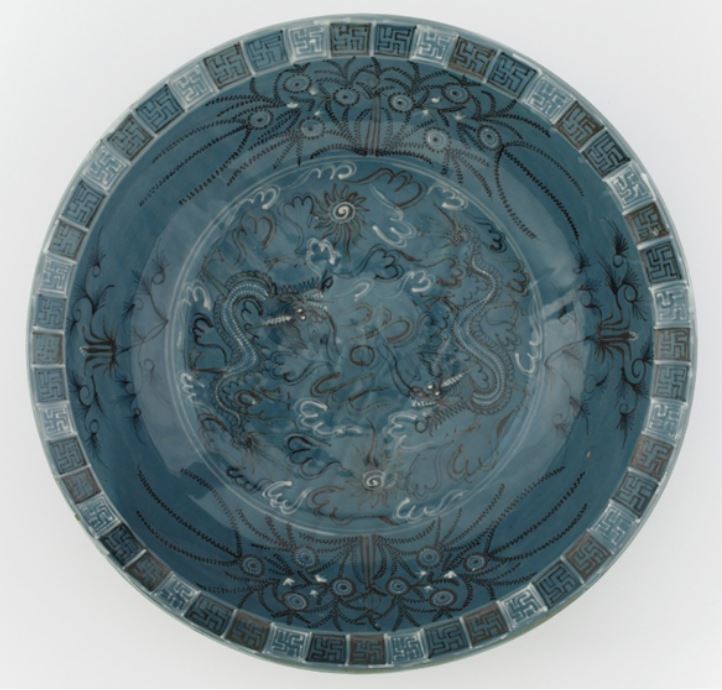
Zhangzhou ware bowl with design of dragons and plants, Ming dynasty, late 16th–early 17th century, porcelain with opaque white and cobalt-blue glazes and iron and cobalt pigments and white slip under clear glaze, Purchase—Rosalind, Sidney, and Stephen Glazer Memorial Fund for Chinese Ceramics, Freer Gallery of Art, F2006.6a–d
Sneak Peek: Overseas Demand for Chinese Zhangzhou Ceramics
National Museum of Asian Art, Smithsonian Institution
Online program, January 10, 12pm
Zhangzhou ceramics, also known as Swatow ware, are fancifully decorated wares that were made in southern Fujian province from the 1560s to the 1630s. From the outset, they were sought after abroad, especially in Southeast Asia and Japan, but Western interest in Zhangzhou ware pales in comparison to the attention garnered by porcelain from Jingdezhen in Jiangxi province. This talk introduces NMAA’s collection of Zhangzhou bowls, showcasing the potters’ creativity and ingenuity in making greatly appealing wares at a rapid pace to supply a vibrant overseas market. They worked in a range of palettes: red, green, and turquoise; blue and white; and blue, brown, and white with built-up slip. A bowl decorated with dragons that was originally exported from China to Japan and is now in the Freer collection is a special highlight of the talk.
Jan Stuart is the Melvin R. Seiden Curator of Chinese Art at NMAA. Her work focuses on Chinese arts from the tenth century to the present. Currently, she is working on a book about ceramics in the Freer Gallery of Art and an exhibition of a lacquer screen made in 1672. She co-curated and coedited the exhibition and catalogue Empresses of China’s Forbidden City, 1644–1912 in 2018–19. Between 2006 and 2014, she was Keeper of Asia (department head) at the British Museum.
Read more and register, click here.
